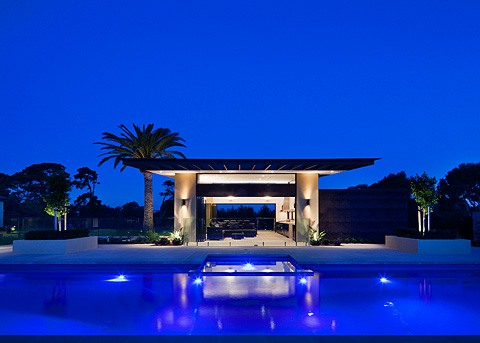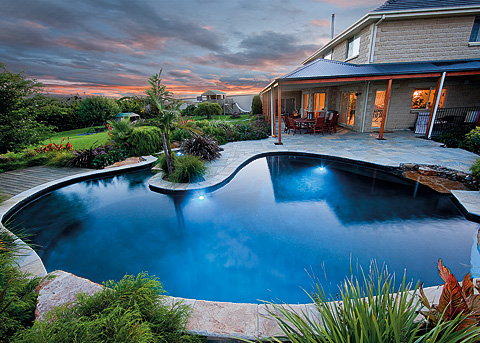Increase the use of your pool by up to six months using the free energy of the sun
Solar systems may vary, but the basic principal remains the same. Pool water is circulated through a series of tubes (the collector) usually mounted on the roof, where heat is absorbed and the heated water is then returned to the pool. The collector can be made of either EPDM Rubber, PVC / TPR material or UV stabilised polypropylene and is usually supplied in multi-tube strips or panels.
The amount of heat absorbed and the resultant increase in pool temperature depends on the size or area of the collector and number of tubes per square metre. The location or positioning of the collector and the control system used also affects this.
SIZE OR AREA
The size of the collector is usually expressed both in square metres and as a percentage of the surface area of the pool. Australian Standard 3634 suggests a minimum collector area equal to 60% of the surface area of the pool but only in ideal, hot climate conditions. SPASA Victoria recommends a minimum area of 80% for the majority of installations. And if higher than average water temperatures, or extended swimming seasons are required, then a larger system may be necessary.
Note that the “area” referred to in relation to collector size is the area of actual collector strip NOT the roof onto which it is placed.
LOCATION & ORIENTATION
Collectors (other than those on flat roofs) should ideally be on north or west facing roofs. If not, more collector area might be needed. Avoid shade from objects ie. trees and neighbouring houses, for at least six hours every day.
PUMPING REQUIREMENTS
You can choose to use either the existing pump or provide a dedicated pump. With an existing pump remember:
• the minimum flow rate for filtration must be maintained
• the filter’s operating pressure should not be pushed above the manufacturer’s maximum
• the pump should have sufficient capacity to handle the static head and friction losses introduced by the addition of the collector circuit
The average solar system needs a flow rate of at least 100 to 200 litres per minute to operate effectively. So in most cases, a dedicated solar pump is required. Check the flow rate of the collector when selecting your pump, as this will vary with the diameter of the tubing used.
To avoid blocking up the collector with dirt and debris, use a dedicated pump with some form of strainer.
SOLAR CONTROLLERS
Nobody knows when the sun will shine so time clocks are of little use in solar heating systems. Instead, a temperature-sensing controller will operate the system only when heat can be gained.
Using a pool blanket can increase the benefits of solar pool heating. See SPASA Victoria Fact Sheet 14 on Covers & Blankets.



